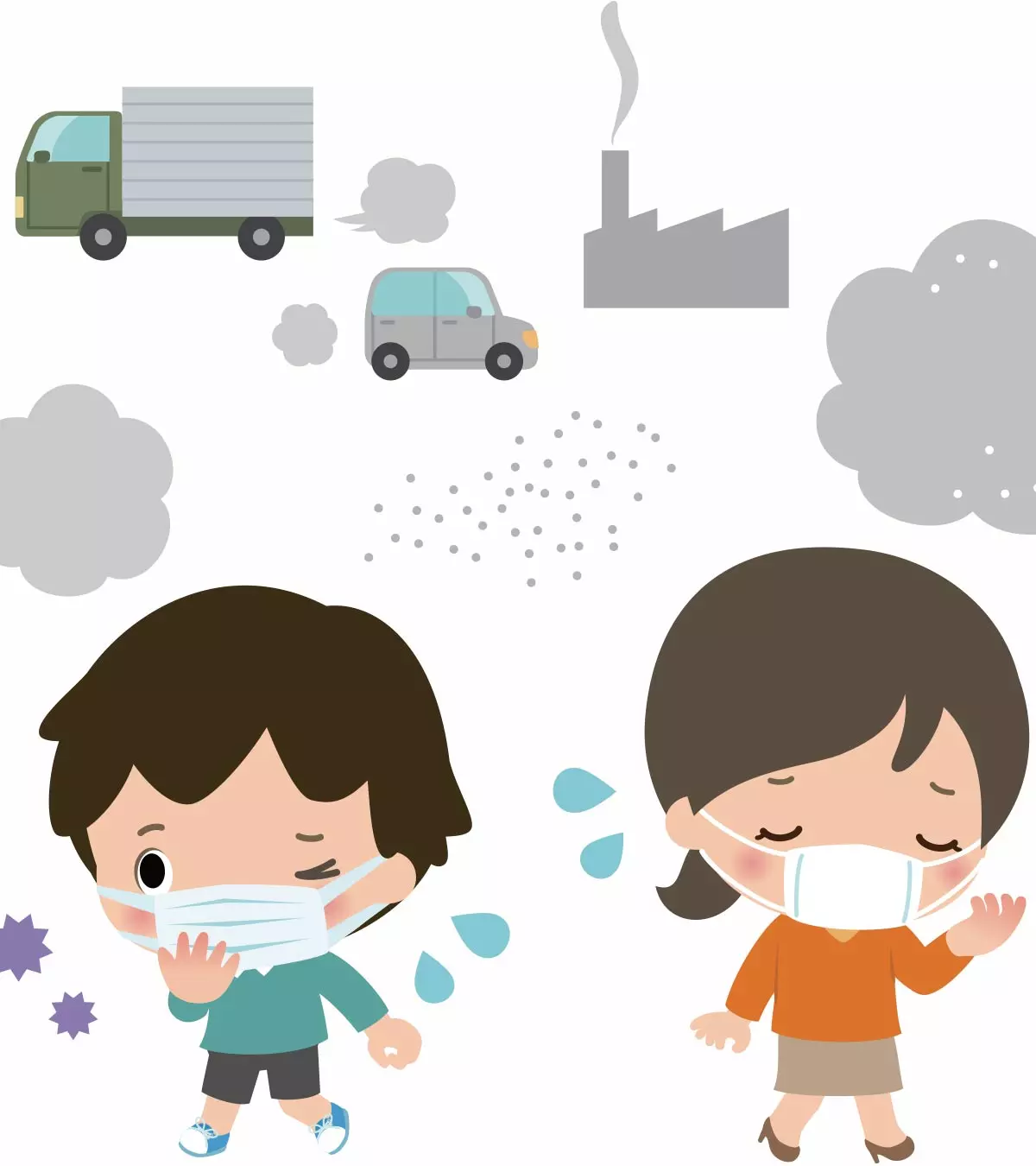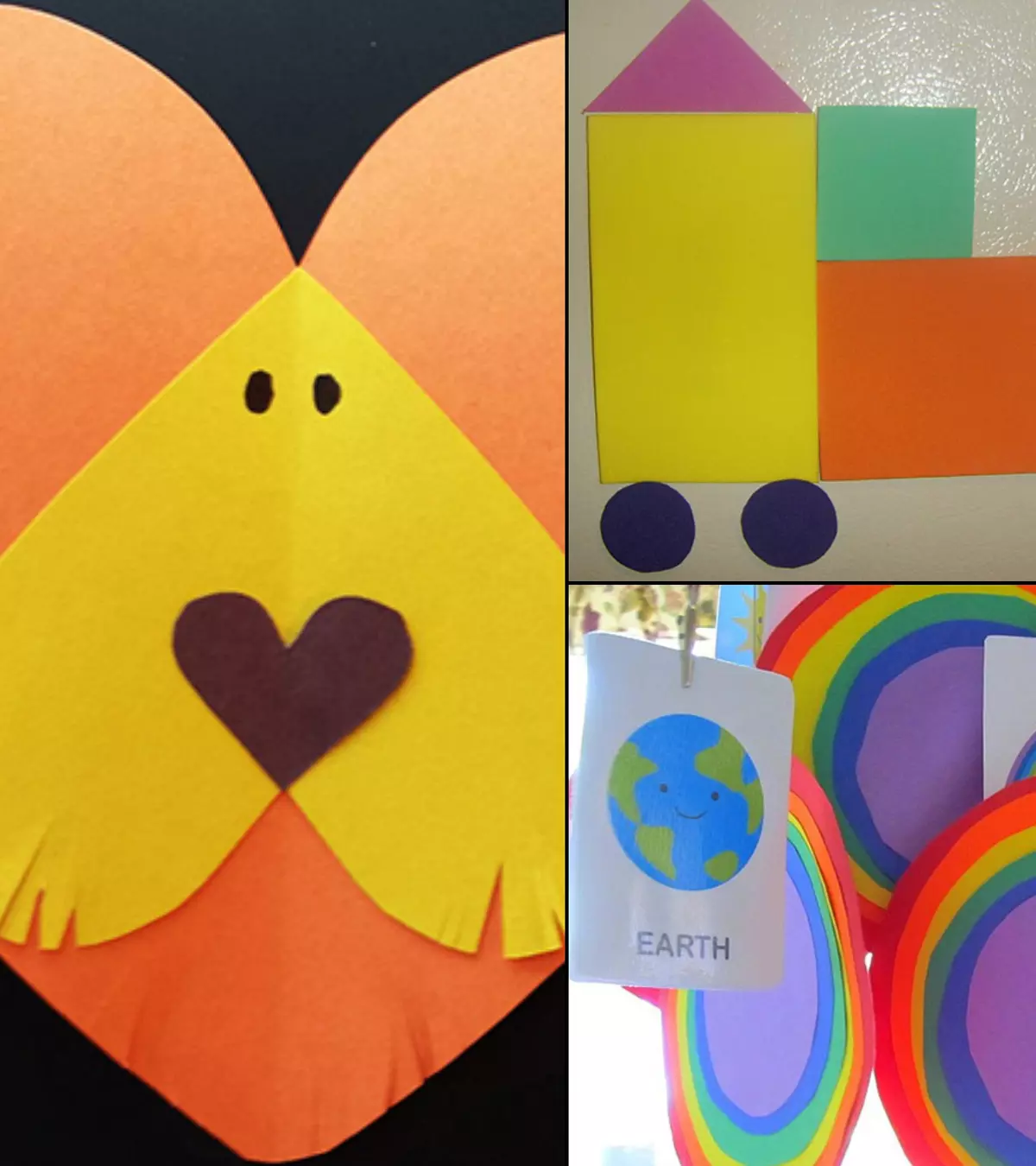

Image: Shutterstock
As kids grow older, they get curious about where the smoke comes from or how clouds are formed, and so on. In this post, we bring to you some facts about air pollution for kids to satisfy their inquisitive nature about pollution. These facts will also help them understand how important it is to keep the environment clean and pollution-free. So read on to learn more about air pollution and quiz your kids based on these facts.
What Is Air Pollution?
Air pollution is contamination of air/atmosphere due to the presence of gases, fumes, particles and other harmful substances. These pollutants make the air harmful/unfit/unhealthy for all living beings (animals, plants and humans).
- Some examples of gaseous pollutants are carbon monoxides, nitrogen oxides, sulfur dioxide, ozone, hydrogen sulfide and volatile organic compounds (VOCs).
- Particles in the air can be large or small (fine). Examples of large particulates are lead, dust and asbestos fibers. Nitrates and sulfates are small particulates. When particulates mix with moisture present in the air, these are referred to as particulate matter (PM).
- Other harmful air pollutants are mercury or pesticide particles that mix with air.
- Air pollutants are divided into two categories – primary and secondary. Primary pollutants are direct emissions such as fumes from vehicles or factories. Secondary pollutants are toxic substances that form due to chemical changes in primary pollutants. For example, ozone gas is a type of secondary air pollutant [1].
What Is Indoor Air Pollution?
The air inside a closed structure such as a house or any building can become polluted due to tobacco smoke, mildew and dust mites. VOCs found in cleaning agents, furniture polish, dry cleaning, new carpets and paint can also cause serious indoor pollution.
- Air conditioning ducts can harbor mold and spores that can cause indoor air pollution.
- Radon is a natural gas that can become trapped in houses and over time can cause serious health problems such as cancer.
- Pollen, exhaust fumes and other pollutants from outside can enter the indoor area and contaminate the air.
- Indoor air pollution can cause severe respiratory problems such as chronic obstructive respiratory disease (COPD). It can worsen asthma and cause other health issues like pneumonia [2].
What Causes Air Pollution
Air pollution can occur for various reasons.
1. Industrial Emissions:
All types of industrial plants (big and small) emit toxins in the air as a result of the manufacturing process. Most manufacturing units emit carbon monoxide into the atmosphere along with other toxic chemicals.
2. Fossil Fuel Consumption:
Use of automobiles, airplanes, ships and trains require fossil fuels like coal and petroleum. The burning of these fossil fuels creates primary as well secondary pollution.
3. Use Of Chemicals:
Even the basic household cleaning products can cause air pollution. You need to fumigate your home to counter a pest infestation, and there you have it – air pollution. The paint you use in your house can emit VOCs long after it has dried. Chemicals used for farming purposes such as pesticides and fertilizers also cause air pollution.
4. Work Of Nature:
Some natural occurrences can also pollute the air. Volcanic eruptions, dust storms, pollen distribution and forest fires can cause medium or large scale air pollution.
Effects Of Air Pollution
Air pollution can cause significant damage to the environment and your health.
- Air pollution can cause acid rain, which can harm vegetation, animals and marine life. Toxins like sulfuric acid can combine with moisture in the air to form clouds. Rain from these clouds is acidic in nature.
- When nitrogen oxides combine with VOCs during sunlight, the result is ground level ozone. If you breathe ozone on a regular basis, it can lead to respiratory problems and even worsen existing conditions such as asthma. Ground level ozone is also harmful to plant and animal life.
- Inhalation of large amounts of carbon monoxide can affect brain and heart as it lowers the flow of oxygen in the body. It can also be fatal.
- Lead present in the air can enter the body and cause a host of health problems. Depending on its exposure levels, it can cause damage to your nervous system, heart, kidneys, reproductive organs and the immune system. In children, lead ingestion can cause learning and behavioral problems. Lead from the polluted air can also contaminate soil and water systems. This way it also harms plants and animals.
- If you inhale PM in large amounts or on a regular basis, you can suffer from respiratory problems, cardiac disorders and poor lung function. In some cases (people with lung or heart problems), it can even be fatal. The presence of PM in the air can create haze or smog that can reduce outdoor visibility. This can result in accidents. PM can reach water bodies and make their content acidic in nature. The acidic water, in turn, can damage soil, crops and forests. Particulates can also damage stone monuments of historic and cultural importance.
Preventing Air Pollution
Some air pollution is inevitable in today’s heavily industrialized world. But there are some measures all of us can take to ensure minimum air pollution and in turn lower the risks it causes regarding health and environment.
- You can reduce indoor air pollution by ensuring proper ventilation in the house, using chemical-free cleaning agents, non-toxic paints and keeping tobacco smoke at bay. Regular cleaning of AC ducts and carpets and timely repairs of water leaks in the house to prevent wall damage. This ensures no mold and fungi in the house, which release poisonous gases.
- It is important for children to learn the importance of recycling used products. Recycling can reduce the load on industries and in turn lower air pollution.
- Children also need to learn to conserve energy. Walking or cycling instead of using motor vehicles for short distances or pooling cars are measures that go a long way to reducing air pollution. Teaching children to prudently use electronics is also a way to lower air pollution.
Some More Air Pollution Facts For Children
- The word ‘smog’ was used in London for the first time to describe intense air pollution consisting of smoke and fog.
- In any given day, an adult can breathe air measuring 3000 gallons.
- Indoor air pollution can also occur inside your car. This is one of the interesting facts on air pollution for kids to know.
Informing children about ill effects of air pollution and teaching them ways to reduce the same are two ways to raise a generation that cares about its environment.
What steps have you taken to reduce indoor air pollution? How do you inform your kids about air pollution? Please share some information on air pollution for kids with our readers.
Community Experiences
Join the conversation and become a part of our nurturing community! Share your stories, experiences, and insights to connect with fellow parents.
Read full bio of Debolina Raja













